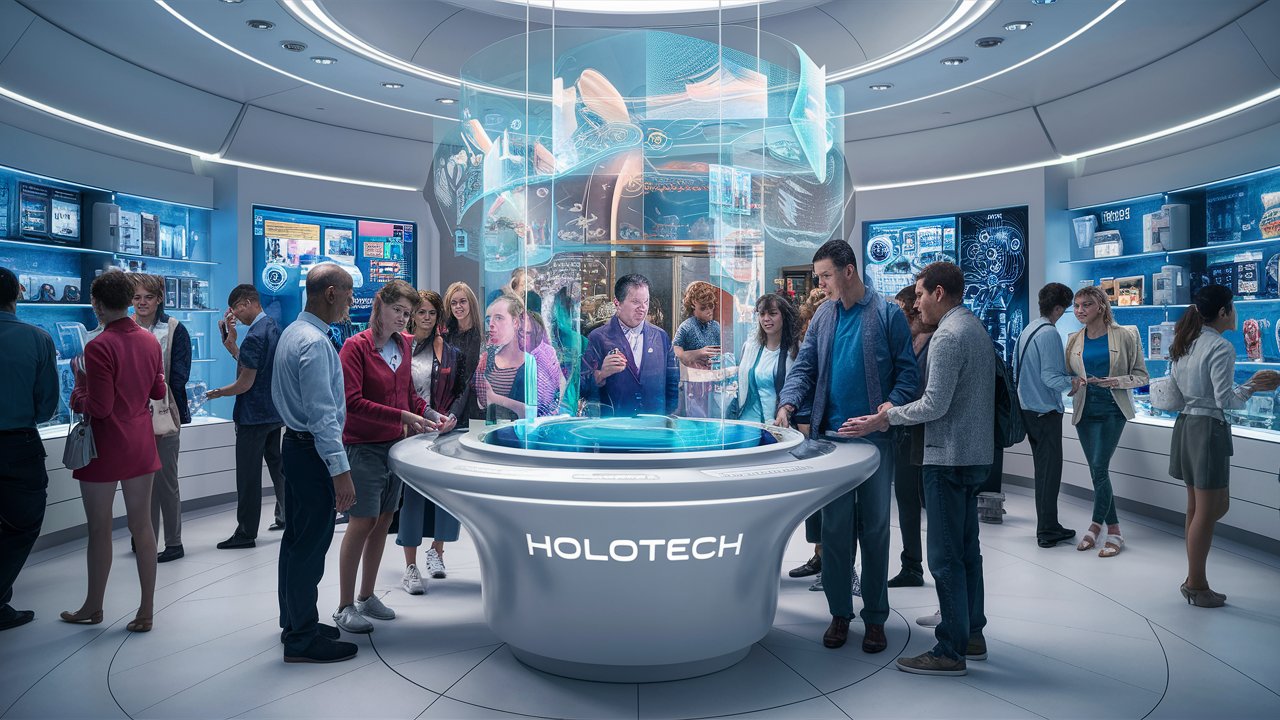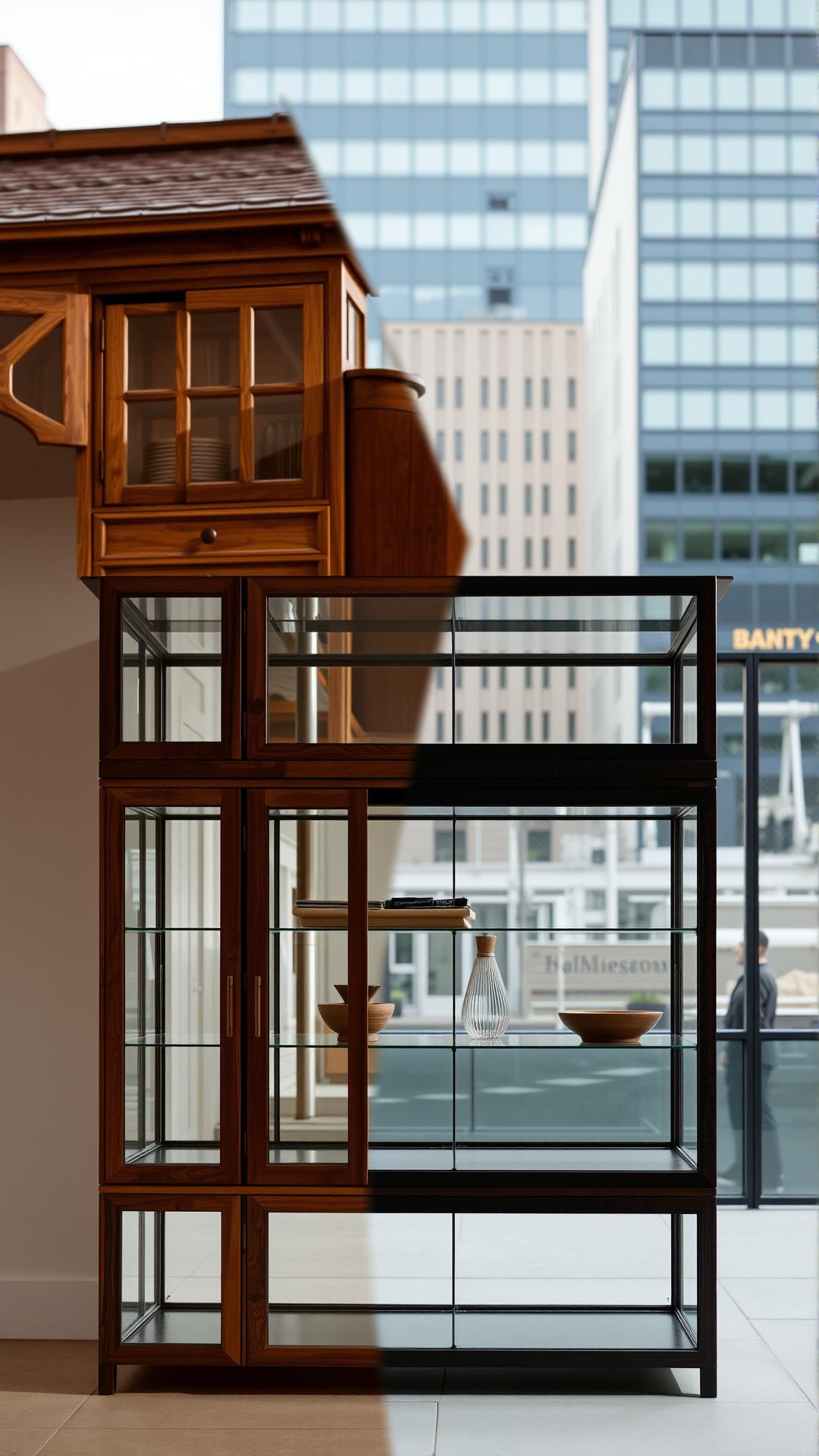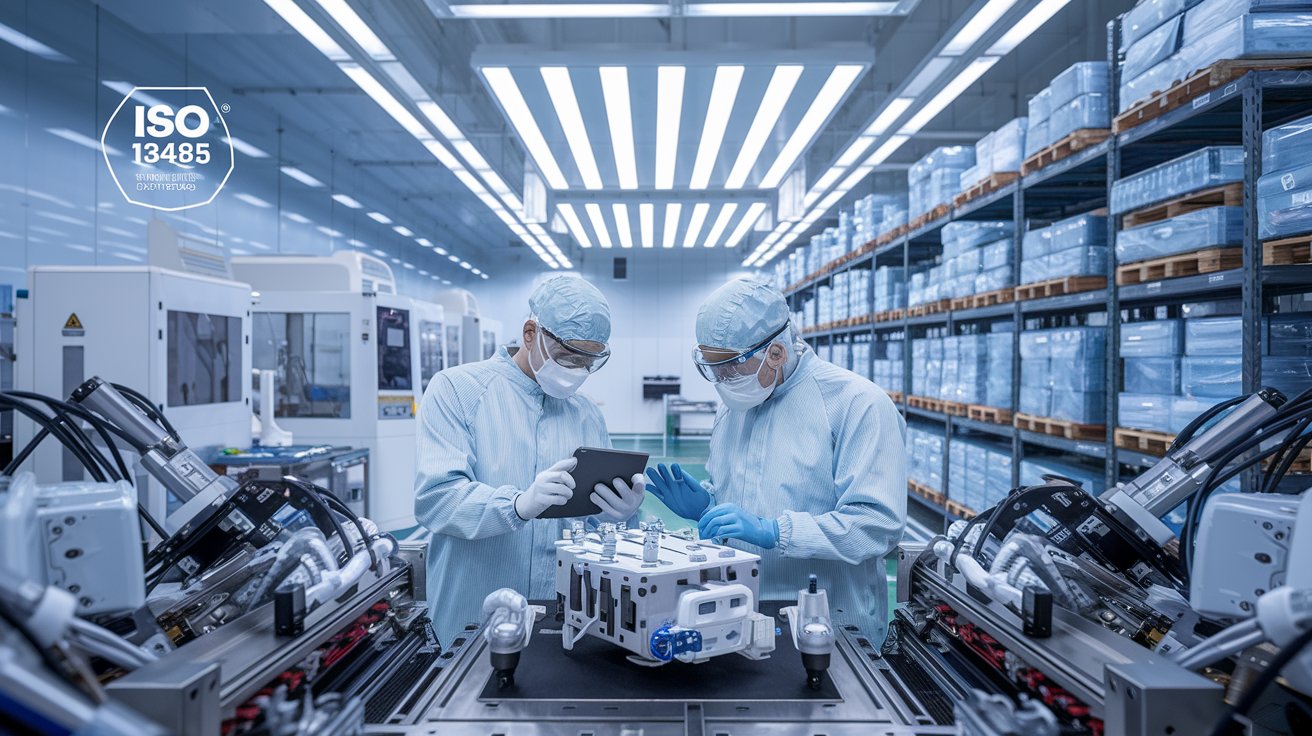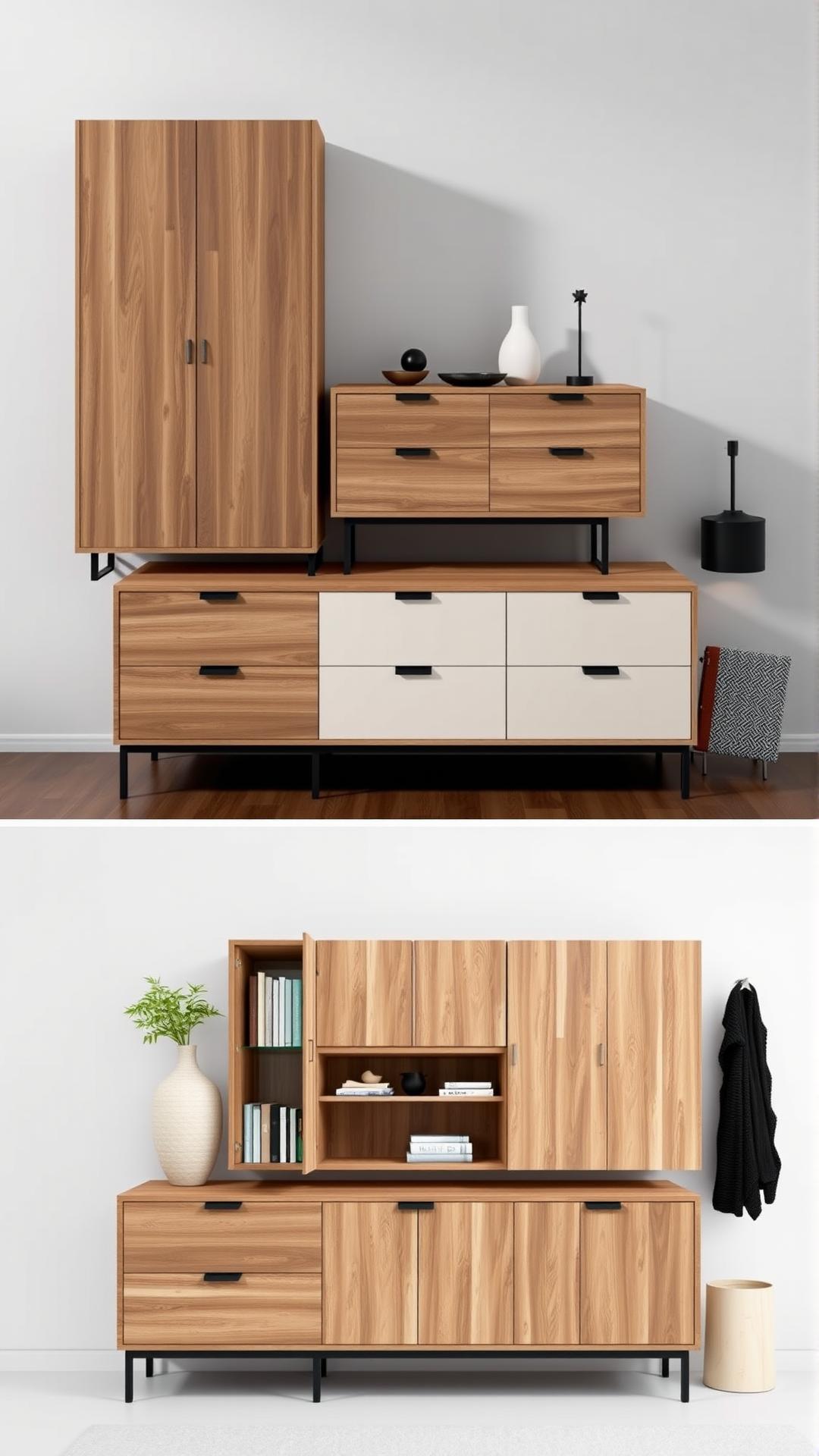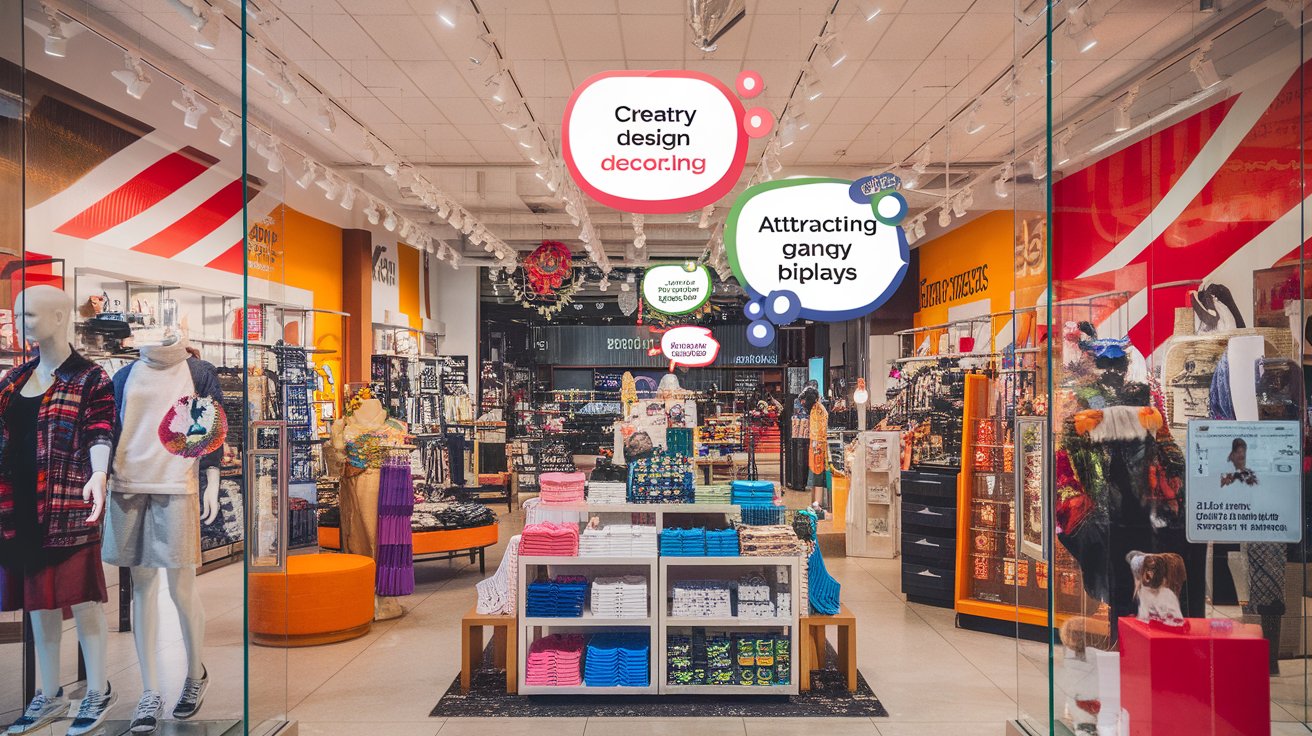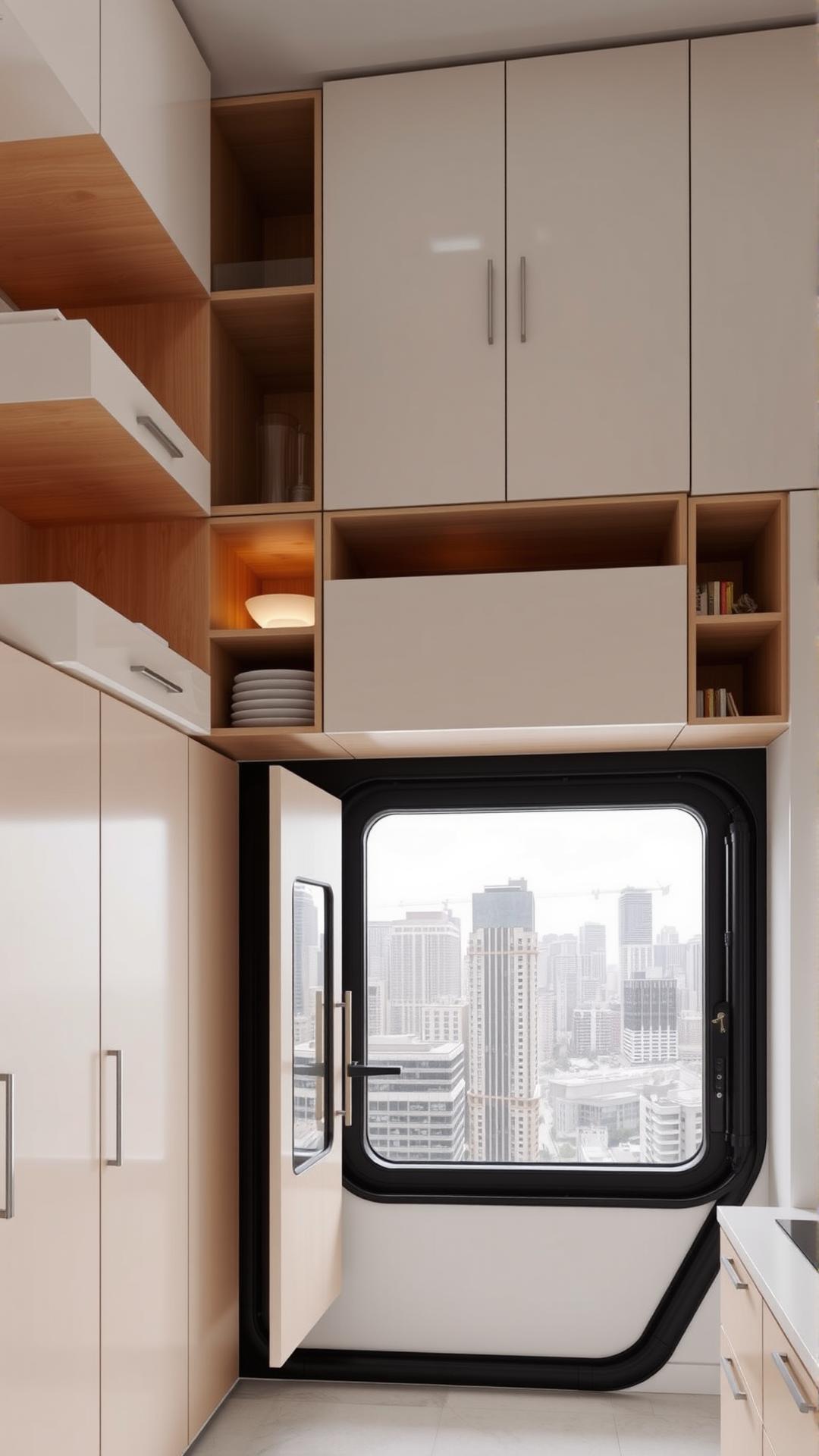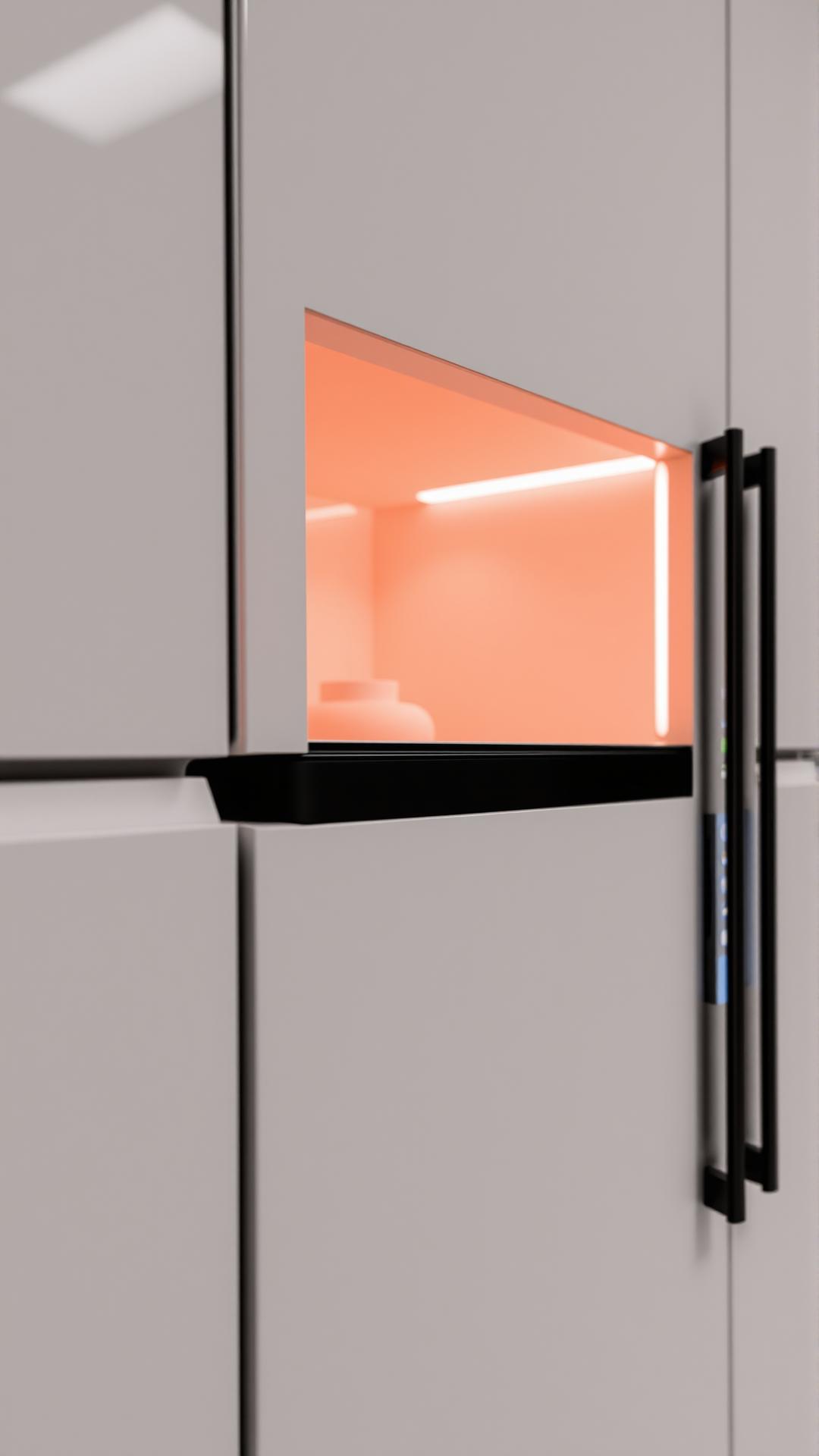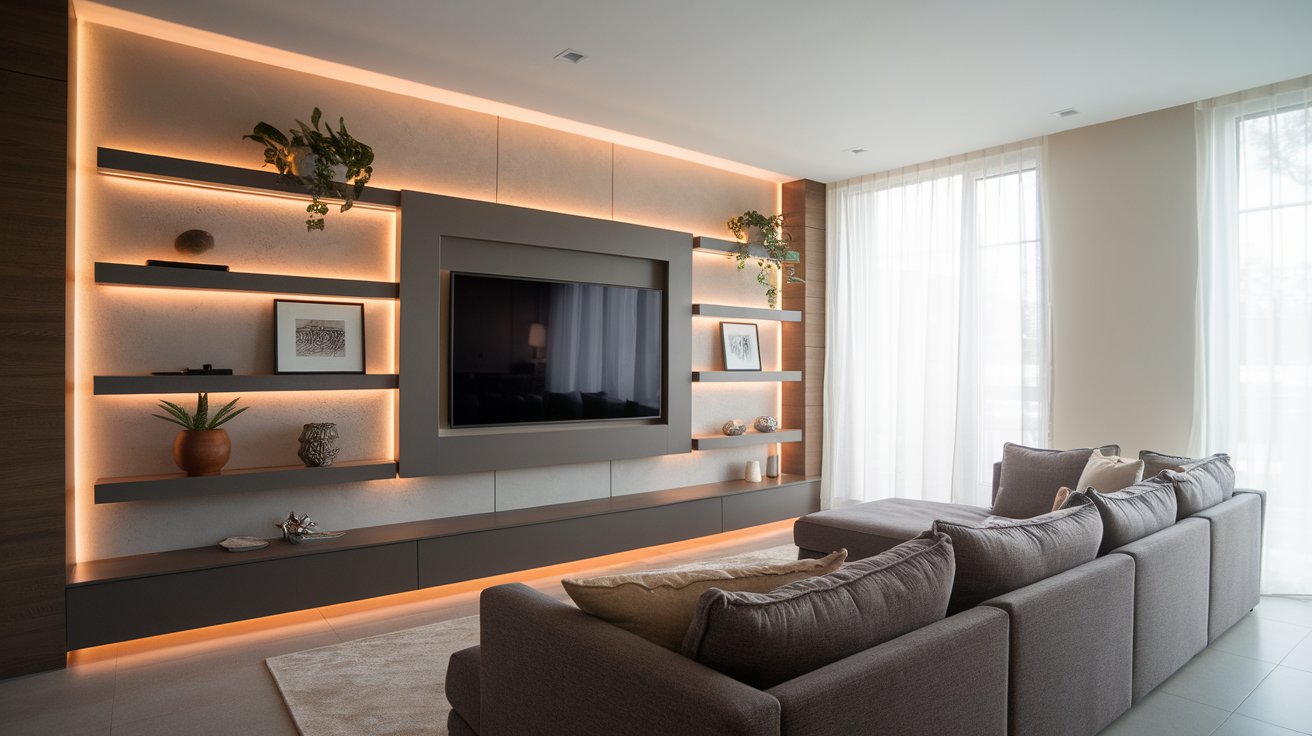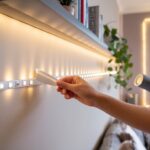Introduction
Cabinet design plays a crucial role in maximizing storage efficiency and enhancing the aesthetic appeal of any space, whether it be a kitchen, bathroom, or office. With the evolving styles and functionalities expected in modern storage solutions, cabinets have transformed from mere functional pieces to integral components of interior design. Understanding the foundational principles of cabinet design, including material choice, layout functionality, and style, is essential for creating spaces that are not only useful but also visually appealing.
This article explores a variety of innovative cabinet design ideas that cater to contemporary tastes while emphasizing practicality. We will delve into different styles, materials, and configurations that can dramatically improve organizational efficiency in your home or office. The goal is to inspire you to rethink your storage solutions and consider how modern cabinet design can significantly enhance your living or working environment.
The Evolution of Cabinet Design: From Tradition to Modern Aesthetics
The journey of cabinet design reflects society’s broader historical transitions, embodying shifts in cultural values, technological advancements, and changing lifestyle needs. Historically, cabinets were primarily functional, designed to store items securely and efficiently. Early designs, often handcrafted from solid wood, epitomized traditional craftsmanship, characterized by elaborate carvings and detailing. These cabinets were often ornately decorated, reflecting the artisan’s skill and the owner’s status.
As time progressed, the Industrial Revolution brought about significant changes in manufacturing processes, allowing for mass production. This led to a shift in cabinet design, prioritizing utility over ornamentation. The emergence of new materials, such as metal and laminated wood, introduced innovative styles, enabling designers to explore minimalistic and functional aesthetics. In the mid-20th century, the advent of modernism challenged the ornate styles of the past, embracing simplicity and clean lines alongside an emphasis on the integration of form and function.
The latter part of the 20th century and early 21st century saw a rise in contemporary cabinet design that prioritized open spaces and flexible usage. Designers began to incorporate modular systems and multipurpose furniture into their collections, reflecting the need for adaptable living spaces in urban environments. This shift coincided with an increased focus on sustainability, prompting the use of eco-friendly materials and production methods.
Modern aesthetics in cabinet design now meld minimalism with a nuanced appreciation for individual expression. Cabinets today can range widely in style, from sleek, chrome finishes with geometric shapes to warm, organic materials that evoke a sense of nature indoors. Furthermore, smart technology integration changes the functionality of cabinets, with features like built-in lighting and electronically controlled mechanisms enhancing usability.
This evolution from traditional oak chests to contemporary modular solutions illustrates not just a change in design but a reflection of lifestyle demands and aesthetic preferences. Cabinets have moved beyond mere storage; they now represent a harmonious blend of art and utility, remaining a pivotal element of modern home design.
Key Styles in Modern Cabinet Design: Contemporary, Industrial, and Scandinavian
Modern cabinet design is a reflection of today’s desire for functionality combined with aesthetic appeal. As preferences evolve, distinct styles have emerged, each offering unique features and characteristics. Among the most prominent are contemporary, industrial, and Scandinavian styles, which cater to diverse tastes while enhancing storage solutions.
Contemporary Cabinet Design
Contemporary cabinet design is noted for its sleek lines, minimalist approach, and emphasis on simplicity. This style often utilizes a mix of materials, such as wood and glass, to create an open and airy atmosphere. The color palette typically features neutral and earthy tones, lending a calming effect to living spaces. Flat-panel doors are a hallmark of contemporary cabinets, promoting a seamless look. It is not uncommon for cabinetry in this style to incorporate smart technology, like lighting solutions that respond to motion or touch, reflecting a modern lifestyle’s demands. In contemporary designs, functionality is paramount; hence, innovative storage solutions are integrated to maximize space while maintaining aesthetic integrity.
Industrial Cabinet Design
The industrial cabinet style draws inspiration from urban environments, characterized by raw materials and unfinished looks. It often features metals, reclaimed wood, and elements like exposed piping or distressed finishes, creating a rugged charm that brings a touch of loft living into homes. This style embraces a functional ethos, where cabinets are designed with open shelving or mixed material accents that reveal their construction. Industrial cabinets often serve as statement pieces, blending functionality with a bold aesthetic, making them perfect for settings where form meets function without compromise.
Scandinavian Cabinet Design
Scandinavian design embodies simplicity, utility, and a connection with nature. Cabinets in this style are often characterized by light woods, such as birch or ash, and feature clean lines with a focus on functionality. A key feature is the integration of innovative storage solutions, like modular shelving systems that can be adapted according to the user’s needs. The color palette leans towards soft hues, often with pops of brighter colors to enhance warmth and energy in a space. This approach promotes not only organization but also a serene aesthetic, harmonizing with the principles of minimalism and sustainability that define Scandinavian design.
Through these three styles—contemporary, industrial, and Scandinavian—modern cabinet design offers varied approaches to home storage. Each style not only enhances organization but also contributes to the overall visual appeal of a space, creating a harmonious blend of utility and aesthetic enjoyment.
Materials that Enhance Cabinet Functionality: A Modern Approach
In modern cabinet design, the choice of materials plays a pivotal role in balancing functionality and aesthetics. Various materials, including wood, metal, and composites, contribute not only to the cabinets’ utility but also to the overall style of the space they inhabit. Understanding these materials helps homeowners and designers select the right options to achieve both practicality and elegance in their storage solutions.
Wood: Timeless Elegance and Versatility
Wood remains a classic choice for cabinet construction, celebrated for its warmth and natural beauty. Different species of wood offer distinct characteristics; for instance, oak boasts durability and a rich grain pattern, while maple presents a smoother, more modern finish. Custom cabinetry often highlights wood species, with finishes ranging from rich stains to sleek paints. The combination of varying wood textures can create depth and visual interest, making wooden cabinets adaptable to contemporary and traditional designs alike.
Advancements in wood treatment techniques have enhanced its durability, making it more resistant to scratches and humidity. This makes wood an ideal choice in environments such as kitchens and bathrooms. Eco-friendly options, like reclaimed wood or sustainably sourced varieties, are increasingly popular, embodying a commitment to environmental responsibility while adding character to the design.
Metal: A Bold Statement in Modern Design
Metal accents in cabinet design introduce a sleek, industrial aesthetic that appeals to modern sensibilities. Materials such as stainless steel, aluminum, and even brass can transform kitchen and storage areas, adding a contemporary edge. Metal cabinets are renowned for their strength and long-lasting nature; they are resistant to moisture and require minimal maintenance compared to wooden alternatives.
Incorporating metal can enhance functionality as well; for example, magnetic surfaces can simplify organization by allowing easy attachment of tools and accessories. Additionally, metal finishes can be chosen for visual effect—polished surfaces reflect light, while matte finishes offer a more understated elegance. By pairing metal cabinets with wood or glass, designers can create dynamic contrasts that harmoniously blend ruggedness with refinement.
Composites: Innovative Solutions for Diverse Needs
Composite materials, which combine multiple elements to achieve enhanced properties, offer modern solutions for cabinet design that prioritize strength and versatility. Common composites include engineered wood products like MDF (medium-density fiberboard) and plywood, which are praised for their stability and resistance to warping. These materials can be finished with an array of veneers, paints, or laminates, allowing for customization that meets both functional requirements and design preferences.
The adaptability of composites also allows for innovative construction methods, facilitating intricate designs that wooden cabinets may not support. Their affordability can also make them an economical choice for homeowners seeking modern solutions without compromising on style. As technology progresses, these materials continue to evolve, integrating sustainability and enhanced performance to meet the needs of modern spaces.
Maximizing Space with Smart Cabinet Solutions
Innovative Cabinet Configurations for Urban Living
Modern urban living often presents challenges when it comes to space; however, savvy cabinet design can transform even the smallest of areas into organized, functional spaces. Designers and homeowners alike are increasingly opting for smart cabinet solutions that maximize storage efficiency while maintaining aesthetic appeal. Tailoring cabinets to specific spatial constraints can turn underutilized corners, small nooks, and narrow walls into valuable storage hubs.
A significant trend in cabinet design is the multi-functional cabinet system. By incorporating features such as pull-out drawers, foldable elements, and hidden compartments, these cabinets respond effectively to the demands of minimalistic urban spaces. For instance, a combination of shelving and cabinetry below a window can optimize storage without sacrificing natural light. Transforming these areas into multitasking zones allows urban dwellers to make the most of their limited square footage.
Another effective approach involves vertical space utilization. Installing cabinets that extend towards the ceiling not only creates a visual impact but also enhances storage capabilities. These tall cabinets can be designed with a mix of closed doors for concealed storage and open shelves for display items. Utilizing a stepladder or built-in pull-down mechanisms can facilitate access to higher shelves, ensuring that no space goes wasted.
Corner cabinets are also evolving through clever design innovations. Lazy Susans or pull-out systems can be integrated to make these tricky spaces accessible. Instead of leaving corners vacant, these solutions offer additional storage for pantry items or kitchenware, enhancing the overall functionality of the room.
In addition to maximizing functional spaces, selecting the right materials in cabinet design can create an illusion of spaciousness. Light-colored finishes and glossy surfaces reflect light, giving a more open feeling to tight areas. Incorporating glass doors or open shelving can further contribute to a less cluttered appearance, allowing users to maintain an organized look while still having their essentials within reach.
Combining these innovative cabinet configurations with smart organizational tools—such as dividers, pull-out baskets, and integrated lighting—can significantly elevate the usability of storage spaces in urban homes. With thoughtfulness in design, even the most compact living situations can be transformed into efficient, well-organized environments that cater to modern lifestyles.
Incorporating Technology into Cabinet Design: Enhancing Functionality and User Experience
The integration of smart technology into cabinet design is revolutionizing how we approach storage solutions in modern homes. By blending aesthetics with functionality, innovative technology transforms traditional cabinets into intuitive and efficient systems that cater to everyday needs. This chapter examines the various ways in which advanced technology is being embedded into cabinet design, offering enhanced organization and user experience.
Smart Features for Improved Organization
One of the most significant advancements in cabinet design is the incorporation of smart features that improve organization. For instance, cabinets equipped with sensors can automatically illuminate the interior as soon as the door opens, significantly enhancing visibility. Smart shelves can adjust their height at the touch of a button, allowing users to customize their storage based on the items being stored. Furthermore, automated pull-out drawers streamlined with tracks can prevent clutter while allowing easy access to items in the back, ensuring that everything is just a touch away.
Another innovative approach includes integrating smart cabinet locks that can be controlled via smartphone applications. This feature not only adds a layer of security but also offers a convenient way for families to manage access to certain items, like medications or valuables. These locks can be paired with other home automation systems, enabling seamless control of the entire environment.
Enhanced User Experience Through Technological Integration
The user experience is further elevated through smart cabinets that offer voice-activated controls. By employing virtual assistants, individuals can command their cabinets to open or close, find specific items, or even check stock levels of pantry goods. Such technology transforms cabinet interactions into streamlined processes, reducing the time spent searching for items and promoting efficiency.
Touchscreens integrated into the cabinet design can display reminders for inventory management, expiration dates of food items, or can even suggest recipes based on available ingredients. This advanced interaction encourages a more organized lifestyle, making it easier for homeowners to keep track of their supplies and minimize waste.
Integrating technology into cabinet design not only enhances functionality but also brings a fresh aesthetic appeal to modern spaces. As contemporary design continues to embrace innovation, the combination of sophisticated engineering and user-friendly features ensures cabinets are no longer just storage spaces; they are now essential components of an intelligent home environment.
Sustainability in Cabinet Design: Eco-Friendly Practices for Modern Storage
As the demand for environmentally responsible design continues to grow, sustainability in cabinet design has become a pivotal concern for homeowners and designers alike. The integration of eco-friendly materials and manufacturing processes is not only a trend but a necessary response to the pressing challenges of environmental degradation and resource depletion. By selecting sustainable practices, designers can contribute to a healthier planet while enhancing the aesthetic appeal and functionality of modern storage solutions.
Materials That Make a Difference
The foundation of sustainable cabinet design lies in the choice of materials. Reclaimed wood stands out as a prime example, repurposing timber that would otherwise contribute to landfill waste. This not only reduces the demand for new lumber but also adds unique character to cabinets, showcasing natural imperfections and history. Similarly, bamboo has gained popularity due to its rapid growth and renewability; it releases more oxygen during its lifecycle compared to traditional hardwoods.
Another notable option is the use of low-VOC (volatile organic compounds) finishes and adhesives. These products minimize the emission of harmful pollutants during manufacturing and throughout the cabinet’s lifespan, making them a healthier choice for indoor environments. When incorporating such materials, it is vital to verify certifications, such as the Forest Stewardship Council (FSC) label, ensuring that the wood sources are sustainably managed and responsibly harvested.
Innovative Manufacturing Processes
Beyond material selection, innovative manufacturing processes play a significant role in sustainable cabinet design. Many manufacturers are embracing digital fabrication techniques, such as CNC (computer numerical control) machining, to optimize material use and reduce waste. These precise methods allow for greater design complexity while conserving valuable resources, exemplifying how technology can align with sustainability.
Another noteworthy practice is local sourcing, which minimizes transportation emissions and supports local economies. By sourcing materials and products closer to their production site, designers can significantly reduce their carbon footprint. In addition, companies that prioritize energy-efficient production methods and water conservation during manufacturing help underscore a commitment to environmental responsibility.
As the industry moves towards a more sustainable future, designers and homeowners are called to consider how their choices in cabinet design can foster both organization and environmental stewardship. The integration of eco-friendly materials and responsible manufacturing methods not only enhances modern aesthetics but also aligns with a growing ethos of sustainability in everyday living.
Conclusions
Effective cabinet design can transform any space, making it more organized and appealing. By considering various styles, materials, and configurations, one can create cabinets that not only fulfill their storage purposes but also enhance the overall aesthetic of the environment. This blend of function and design is increasingly important in modern interior design, where every element counts.
Investing in thoughtful cabinet design can lead to long-term satisfaction with your space. Whether renovating an existing area or building new, the right cabinet choices can elevate the functionality and beauty of your home or office, meeting the demands of both modern living and contemporary aesthetics.


